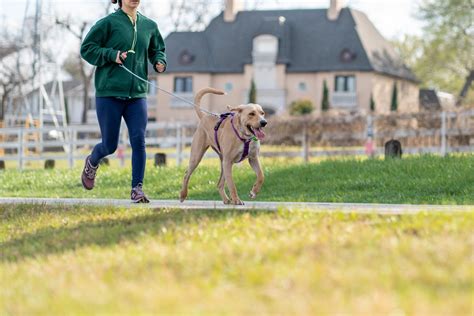Introduction
Traveling with your beloved pet can be an enriching experience, providing opportunities for bonding, exploration, and adventure. With careful planning and preparation, you can ensure your furry companion stays healthy and happy during your travels. Here’s a comprehensive guide to exercise and fitness for your canine travel buddy.

Exercise Considerations
1. Age and Health Status:
- Puppies and senior dogs require tailored exercise routines. Consult your veterinarian for specific recommendations.
- Certain health conditions may restrict exercise intensity or duration.
2. Breed and Size:
- Active breeds like Huskies and Border Collies crave more exercise than laid-back breeds like Bulldogs.
- Larger dogs generally require longer walks or playtime compared to smaller ones.
3. Environment and Terrain:
- Destination terrain can impact exercise options. Research local parks, trails, or beaches suitable for dog walking or running.
- Ensure access to water sources for hydration.
Exercise Options
1. Walking:
- The most accessible form of exercise, suitable for all dogs.
- Start with short walks and gradually increase distance and duration.
- Explore scenic routes or designated dog parks.
2. Running:
- High-energy dogs may enjoy running alongside your bike or on a leash.
- Introduce running gradually and pay attention to your dog’s stamina.
- Use a harness instead of a collar to prevent neck strain.
3. Swimming:
- Excellent cardio workout for dogs who love water.
- Ensure supervised swimming areas and provide a life jacket for safety.
- Start with short swim sessions and increase duration as tolerated.
Fitness Maintenance
1. Nutrition:
- Provide a balanced diet tailored to your dog’s age, size, and activity level.
- Consider high-energy snacks or supplements during extended trips.
- Avoid overfeeding before exercise to prevent stomach upset.
2. Hydration:
- Always carry fresh water and encourage your dog to drink frequently.
- Dehydration can lead to health issues, especially in hot or humid environments.
3. Rest and Recovery:
- Provide ample rest periods after exercise.
- Monitor your dog for signs of fatigue or discomfort.
- Gradually increase exercise intensity and duration to avoid overexertion.
Tuft and Paw vs. Other Options
Advantages:
- Personalized travel itineraries tailored to your dog’s needs.
- Professional pet care specialists ensure your pet’s well-being.
- Guided excursions and activities designed for dogs and their owners.
Disadvantages:
- Higher cost than DIY options.
- Limited availability in certain destinations.
- Potential for delays or cancellations during peak travel seasons.
Market Insights and Standouts
Key Market Trends:
- Growing demand for pet-friendly travel experiences.
- Focus on pet health and well-being during travel.
- Integration of technology for pet monitoring and communication.
Standout Companies:
- Rover: Largest network of pet sitters and dog walkers worldwide.
- PetBacker: Trusted platform connecting pet owners with experienced sitters.
- Wag!: Convenient on-demand dog walking and pet care services.
Tips and Tricks
- Start exercising your dog gradually to avoid injuries.
- Use positive reinforcement (treats or praise) to motivate your dog.
- Keep your dog on a leash in unfamiliar areas.
- Avoid exercising your dog during extreme heat or cold.
- If your dog has any health concerns, consult your veterinarian before starting an exercise program.
Conclusion
Traveling with your dog can be a rewarding experience with proper planning and preparation. By considering your pet’s exercise and fitness needs, you can ensure their health and well-being throughout your adventures. Whether it’s walking, running, swimming, or exploring pet-friendly destinations, embrace the opportunity to strengthen your bond with your furry travel companion.
Additional Resources
- American Kennel Club: Dog Exercise and Fitness
- ASPCA: Traveling with Your Pet
- International Pet and Animal Transportation Association
Table 1: Recommended Exercise Duration by Dog Age
| Age | Exercise Duration |
|---|---|
| Puppies (under 1 year) | 5-15 minutes |
| Young Adults (1-3 years) | 30-60 minutes |
| Adults (4-8 years) | 60-90 minutes |
| Senior Dogs (over 8 years) | 30-60 minutes |
Table 2: Dog Walking Distances by Breed
| Breed | Average Walking Distance |
|---|---|
| Chihuahua | 1-2 miles |
| Golden Retriever | 2-3 miles |
| German Shepherd | 3-4 miles |
| Husky | 4-5 miles |
Table 3: Pet-Friendly Travel Destinations in the US
| Destination | Parks and Trails | Dog Parks |
|---|---|---|
| San Francisco, CA | Golden Gate Park, Presidio | Dolores Park, Fort Mason Dog Park |
| Portland, OR | Forest Park, Mount Tabor | Gabriel Park, Sellwood Dog Park |
| Asheville, NC | Blue Ridge Parkway, Mount Mitchell | Carrier Park Dog Park, Aston Park Dog Park |
Table 4: Pet Travel Services Comparison
| Service | Price Range | Features |
|---|---|---|
| Rover | $20-$100 per day | Pet sitting, dog walking, boarding |
| PetBacker | $25-$150 per day | Trusted pet sitters, GPS tracking |
| Wag! | $15-$40 per walk | On-demand dog walking, pet care |





















